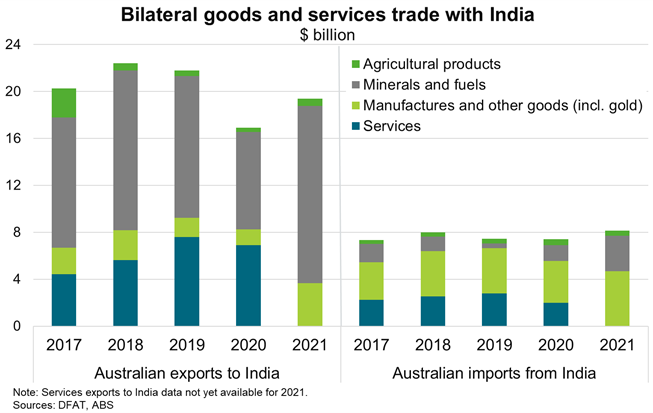Australia—Trade agreement with India boosts export opportunities
Australia and India agreed to an Economic Cooperation and Trade Agreement that, once ratified, will boost export opportunities for Australian businesses. India was Australia’s sixth largest export market in 2020, taking almost $17 billion in goods and services exports (Chart). The trade deal will eliminate tariffs on more than 85% of Australia's goods exports to India, including coal, lentils, lobsters and critical minerals, rising to almost 91% of Australia’s goods exports over 10 years. Tariffs on Australian sheep meat and wool will be eliminated, while the agreement will phase tariff reductions on wine and certain horticulture products. Australia aims to lift India into its third largest destination in Asia for outward investment and a top three export market.
But while the trade deal is broad, it is an interim agreement and does not include market access for several agricultural products, including sugar, dairy, wheat, chickpeas and beef, for which there are protections for Indian producers. There remains some challenges to doing business in India. And its middle class is still a small but growing proportion of its overall population; according to data from the Pew Research Center, India’s middle class — defined as those earning between US$10 and US$50 per day — was estimated at 82 million people in 2020 out of a population of about 1.4 billion people.


